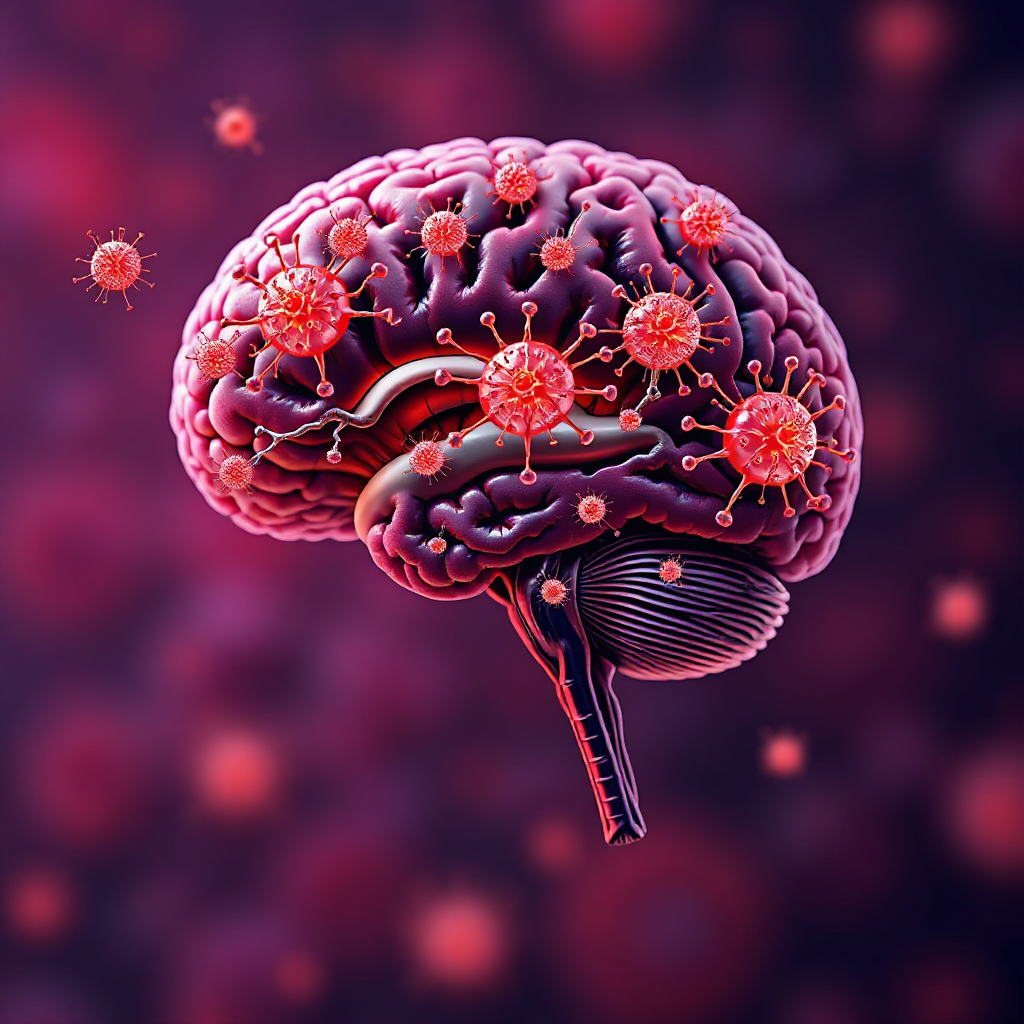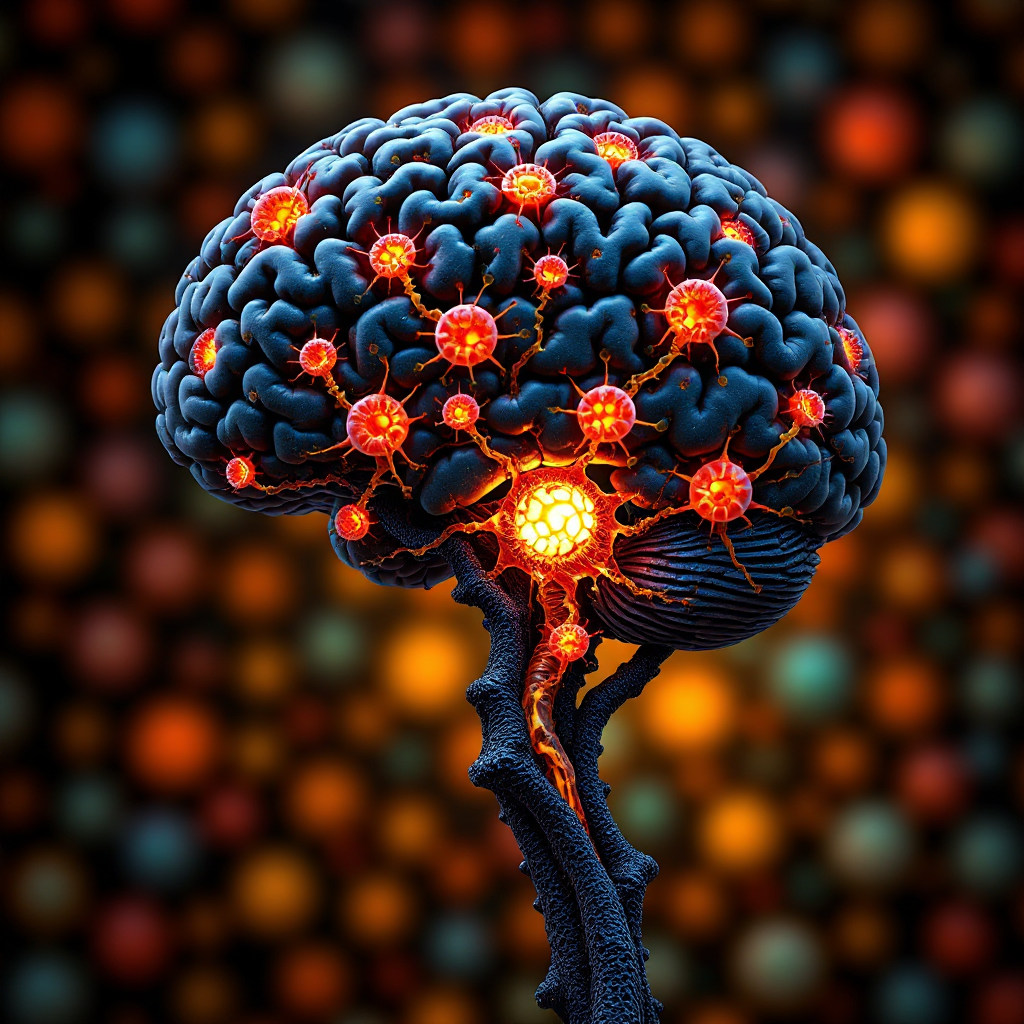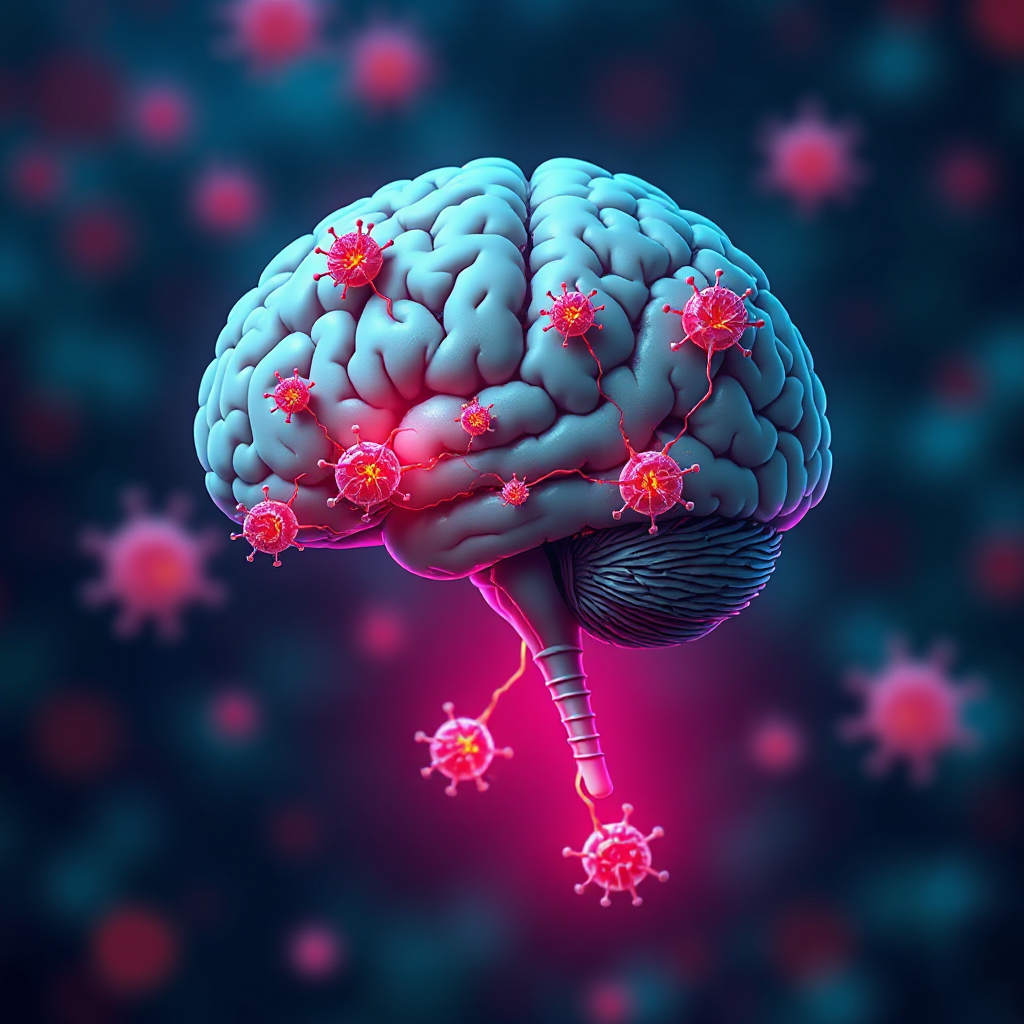What Are Visual Pathway and Hypothalamic Gliomas?

Visual pathway and hypothalamic gliomas are rare brain tumors that primarily affect children and young adults. These tumors often develop in the optic nerves, optic chiasm, or hypothalamus, disrupting vision and hormonal functions. Optic pathway gliomas account for up to 5% of all intracranial tumors in children, with nearly half of these cases linked to neurofibromatosis type 1 (NF1). NF1, a genetic condition, increases the likelihood of these tumors, particularly in children under 10 years. While typically low-grade, these gliomas can vary in severity, especially in younger patients, where they may follow a more aggressive course.
Key Takeaways
Visual pathway and hypothalamic gliomas are rare brain tumors. They mostly affect kids and young adults and are linked to NF1.
Common signs are vision problems, hormone issues, and slow growth. Spotting these signs early helps with better treatment.
Surgery is often the first choice if the tumor can be reached. Radiation or chemotherapy is used if surgery isn’t possible. Custom treatment plans help patients do better.
Support care, like vision tools and hormone therapy, is important. It helps manage symptoms and improves life for patients.
Regular doctor visits are needed to check for problems. This helps keep patients healthier over time.
Characteristics of Visual Pathway and Hypothalamic Gliomas

Location and Nature
Visual pathway and hypothalamic gliomas primarily develop in the optic nerve, optic chiasm, and hypothalamus. These areas are critical for vision and hormonal regulation, making the tumors particularly impactful. Most of these gliomas are classified as low-grade, with pilocytic astrocytomas being the most common type. These tumors typically grow slowly and are often associated with neurofibromatosis type 1 (NF1). While they rarely transform into malignant gliomas, their growth patterns can vary. Some tumors may spontaneously stop growing, while others continue to progress, leading to significant health challenges.
Common Symptoms
Patients with visual pathway and hypothalamic gliomas often experience a range of symptoms, depending on the tumor's location and size.
Vision Issues:
Vision loss is one of the most common symptoms. Patients may notice blurred vision, decreased visual acuity, or visual field defects such as bitemporal hemianopia. Other signs include nystagmus, strabismus, and optic disc changes. In some cases, slow bilateral vision loss occurs, which can significantly impact daily life.Hormonal Imbalances:
Tumors affecting the hypothalamus often disrupt hormonal balance. Precocious puberty, where puberty begins unusually early, is a frequent issue. Growth delays and other endocrinological defects may also arise, particularly in children.Other Symptoms:
Additional symptoms include headaches, fatigue, and developmental delays. Elevated intracranial pressure can lead to hydrocephalus, while diencephalic syndrome may cause weight loss and irritability. These symptoms highlight the broad impact of visual pathway and hypothalamic gliomas on overall health.
Early recognition of these symptoms is crucial for timely diagnosis and treatment.
Types of Visual Pathway and Hypothalamic Gliomas
Pilocytic Astrocytomas
The most common type, especially in children
Pilocytic astrocytomas are the most frequently diagnosed gliomas in children. These tumors often develop in the optic pathway or hypothalamus, areas critical for vision and hormonal regulation. They are classified as low-grade gliomas, meaning they grow slowly and rarely spread to other parts of the brain. Pilocytic astrocytomas are typically well-circumscribed, making them easier to identify and treat.
Slow-growing and often treatable with a good prognosis
These tumors have a favorable prognosis when treated appropriately. Surgical resection can often cure pilocytic astrocytomas, especially when the tumor is cystic and well-defined. Patients with completely removed cerebellar tumors have a nearly 100% survival rate over ten years. Even when surgery is not entirely successful, the five-year survival rate exceeds 90%. However, these tumors can still invade nearby brain tissue, requiring ongoing monitoring and management.
Diffuse Astrocytomas
Less common but more aggressive and challenging to treat
Diffuse astrocytomas are less common than pilocytic astrocytomas but present significant challenges. These tumors grow more aggressively and infiltrate surrounding brain tissue, making complete surgical removal difficult. Their location within the visual pathway or hypothalamus complicates treatment further.
May require intensive therapies like surgery and radiation
Treatment for diffuse astrocytomas often involves a combination of surgery, radiation, and chemotherapy. Precise biopsy techniques are essential to confirm the diagnosis, but radiation-induced changes can mimic tumor progression, complicating follow-up care. Despite these efforts, the prognosis for diffuse astrocytomas remains less favorable compared to pilocytic astrocytomas.
Rare Glioma Subtypes
Fibrillary astrocytomas and other rare forms that may affect the visual pathway or hypothalamus
Rare glioma subtypes, such as fibrillary astrocytomas, occasionally develop in the visual pathway or hypothalamus. These tumors represent a small percentage of all intracranial tumors but can significantly impact vision and hormonal balance. Malignant optic nerve gliomas, a high-grade subtype, are particularly aggressive and challenging to treat.
Prognosis and treatment depend on the specific subtype and location
The prognosis for rare gliomas varies widely. Factors such as tumor grade, location, and patient age influence treatment outcomes. For example, pilocytic astrocytomas in the hypothalamus often respond well to surgery, while high-grade gliomas require more intensive therapies. Early diagnosis and tailored treatment plans are crucial for managing these rare tumors effectively.
Diagnosis and Impact
Diagnostic Methods
Accurate diagnosis is essential for managing visual pathway and hypothalamic gliomas. Imaging techniques play a critical role in identifying the tumor's location and size.
MRI (Magnetic Resonance Imaging) is the gold standard for diagnosing these gliomas, especially in patients with neurofibromatosis type 1 (NF1). It provides detailed images of the optic nerves and chiasm. Pilocytic astrocytomas often appear hypo- or iso-intense on T1-weighted sequences and hyper-intense on T2-weighted or FLAIR sequences.
MRI with contrast enhances visibility, showing bright and uniform enhancement with gadolinium.
CT scans can also detect these tumors, revealing round or oval lesions. However, MRI is preferred due to its superior ability to evaluate optic structures and avoid ionizing radiation exposure, particularly in children.
PET scans may be used to assess tumor progression in certain cases.
A biopsy is often performed to confirm the tumor type and grade. This procedure helps determine the most effective treatment plan.
Impact on Vision
Visual pathway and hypothalamic gliomas significantly affect vision. Progressive vision loss is a common outcome, with some patients experiencing blindness in severe cases. Depth perception and peripheral vision may also deteriorate over time.
Outcome Type | Percentage |
|---|---|
Improvement in vision | |
Stability of vision | 40% - 50% |
Deterioration in vision | Remaining % |
Patients treated after initial observation often have better chances of vision improvement. However, those with bilateral vision loss and multiple symptoms rarely recover fully. Bevacizumab, a targeted therapy, has shown promise in improving vision for some patients under observation.
Impact on Hormonal Balance
Tumors involving the hypothalamus frequently disrupt hormonal regulation. Growth hormone imbalances can lead to stunted growth or abnormal weight changes. Children may experience early puberty, known as precocious puberty, or delayed puberty due to hypothalamic involvement. These hormonal disruptions can significantly affect physical development and emotional well-being.
Early diagnosis and intervention are crucial for minimizing these impacts and improving quality of life.
Overall Health Effects
Fatigue, developmental delays, and emotional challenges
Visual pathway and hypothalamic gliomas often cause fatigue, which can significantly affect daily activities. Patients may struggle with low energy levels, making it difficult to focus on school, work, or social interactions. Developmental delays are another common issue, particularly in children. These delays may manifest as slower progress in motor skills, speech, or cognitive abilities. The tumor's location and its impact on brain function often determine the severity of these delays.
Emotional challenges frequently arise due to the physical and psychological toll of the condition. Children and young adults may experience frustration, anxiety, or depression as they cope with vision loss, hormonal imbalances, or other symptoms. Families also face emotional stress while managing the complexities of treatment and care. Support from mental health professionals and peer groups can help patients and their families navigate these challenges.
Tip: Early intervention with therapies, such as occupational or speech therapy, can improve developmental outcomes and enhance quality of life.
Potential for hydrocephalus or other neurological complications
Hydrocephalus, a condition where excess cerebrospinal fluid builds up in the brain, can occur when tumors obstruct normal fluid pathways. This complication increases intracranial pressure, leading to symptoms like headaches, nausea, and vomiting. If untreated, hydrocephalus may cause severe neurological damage. Treatment often involves surgical procedures, such as the placement of a shunt, to drain the excess fluid and relieve pressure.
Other neurological complications include cognitive and behavioral issues. Tumors in the hypothalamus or optic pathway can disrupt normal brain function, leading to memory problems, difficulty concentrating, or changes in behavior. These effects are more pronounced in younger patients, especially those with conditions like Neurofibromatosis type 1 (NF1). Ongoing treatment and monitoring are essential to manage these complications effectively.
Note: Regular follow-ups with a neurologist can help detect and address complications early, improving long-term outcomes.
Treatment Options

Surgery
Surgical removal of the tumor when feasible, with risks and benefits
Surgery is often the first-line treatment for visual pathway and hypothalamic gliomas when the tumor is accessible. Neurosurgeons aim to remove as much of the tumor as possible without damaging surrounding structures. Complete resection can improve symptoms and reduce the need for additional treatments. However, surgery carries risks, including damage to the optic nerves or hypothalamus, which may lead to further vision loss or hormonal imbalances.
Often used for accessible tumors causing significant symptoms
Surgical intervention is most effective for tumors causing severe symptoms, such as progressive vision loss or hydrocephalus. For well-defined tumors, surgery can provide long-term relief. However, in cases where the tumor infiltrates critical areas, surgeons may opt for partial removal to minimize complications. Post-surgical monitoring is essential to detect any recurrence or residual growth.
Radiation Therapy
Targeted therapy for inoperable or residual tumors
Radiation therapy is a common option for tumors that cannot be fully removed or are inoperable. This treatment uses high-energy beams to target and shrink the tumor, preserving surrounding healthy tissue. It is particularly effective for controlling tumor growth and alleviating symptoms.
Long-term side effects, especially in children, must be considered
Radiation therapy can have significant long-term effects, especially in younger patients.
Cognitive development issues and learning disabilities may arise.
Growth problems and infertility are potential risks.
Survivors may face vision problems, second tumors, or organ damage.
These side effects often appear months or years after treatment, highlighting the importance of careful planning and follow-up care to improve survivors' quality of life.
Chemotherapy
Frequently used in children to delay or avoid radiation
Chemotherapy plays a vital role in managing gliomas, particularly in children. It helps delay or avoid radiation, reducing the risk of long-term side effects. Alkylating agents are commonly used to control tumor growth. Nonrandomized trials suggest that chemotherapy can effectively manage the disease, postponing the need for radiation therapy.
Effective for certain tumor types, with varying drug regimens
Different chemotherapy regimens show varying levels of effectiveness.
Chemotherapy Regimen | Effectiveness (5-year EFS rate) |
|---|---|
Carboplatin + Vincristine (CV) | 39% (± 4%) |
TPCV | 52% (± 5%) |
CV for children with NF1 | 69% (± 4%) |
These regimens demonstrate the potential of chemotherapy to improve outcomes, especially for children with NF1. Tailored treatment plans ensure the best possible results for each patient.
Supportive Care
Vision aids, rehabilitation, and therapies to manage vision loss
Managing vision loss caused by visual pathway gliomas requires a combination of tools and therapies. Vision aids, such as glasses or magnifiers, help patients maximize their remaining vision. For those with significant impairment, assistive devices like screen readers or braille displays provide essential support.
Rehabilitation programs play a critical role in helping patients adapt to vision changes. Orientation and mobility training teach individuals how to navigate their surroundings safely. Vision therapy, which includes exercises to improve eye coordination and focus, may benefit some patients. Occupational therapists often work with patients to develop strategies for daily tasks, such as reading or cooking, ensuring greater independence.
Tip: Early intervention with vision aids and rehabilitation improves outcomes and enhances quality of life.
Support groups and counseling services also address the emotional challenges of vision loss. These resources help patients and families cope with the psychological impact of the condition.
Hormonal therapy to address imbalances and improve quality of life
Hormonal imbalances caused by hypothalamic gliomas often require targeted treatments. Hormonal therapy restores normal levels of growth hormones, thyroid hormones, or sex hormones. For children experiencing precocious puberty, medications like gonadotropin-releasing hormone (GnRH) agonists delay early puberty.
Endocrinologists monitor hormone levels regularly to adjust treatments as needed. This ensures that patients maintain healthy growth and development. In cases of delayed puberty, hormone replacement therapy may be prescribed to initiate normal sexual development.
Note: Addressing hormonal imbalances early prevents long-term complications and supports emotional well-being.
Nutritional counseling and physical therapy complement hormonal treatments. These interventions help manage weight changes and improve overall health. By combining medical and supportive care, patients achieve better physical and emotional outcomes.
Visual pathway and hypothalamic gliomas significantly affect vision, hormonal balance, and overall health, particularly in children and young adults. Early diagnosis plays a critical role in managing symptoms and improving long-term outcomes. Treatments tailored to the tumor’s type and location can help preserve quality of life. Individuals experiencing vision changes, hormonal irregularities, or other concerning symptoms should consult a healthcare professional promptly. Timely medical intervention ensures better management of these complex conditions and reduces the risk of severe complications.
FAQ
What causes visual pathway and hypothalamic gliomas?
These gliomas often develop due to genetic mutations. Neurofibromatosis type 1 (NF1) is a common cause, especially in children. NF1 increases the risk of tumor growth in the optic pathway or hypothalamus. Sporadic cases without genetic links also occur but are less frequent.
Are visual pathway gliomas always cancerous?
No, these tumors are typically low-grade and non-cancerous. Most are pilocytic astrocytomas, which grow slowly and rarely spread. However, their location can still cause significant health issues, such as vision loss or hormonal imbalances, requiring medical attention.
How are these gliomas diagnosed?
Doctors use imaging techniques like MRI or CT scans to locate and assess the tumor. A biopsy confirms the tumor type and grade. For patients with NF1, regular screenings help detect gliomas early, even before symptoms appear.
Can children with these gliomas live normal lives?
Many children lead fulfilling lives with proper treatment and support. Early diagnosis and tailored therapies, such as surgery, chemotherapy, or hormonal therapy, improve outcomes. Vision aids, rehabilitation, and counseling also help manage symptoms and enhance quality of life.
What are the long-term effects of treatment?
Treatment may cause side effects like vision problems, hormonal imbalances, or cognitive challenges. Radiation therapy in children can lead to growth delays or learning difficulties. Regular follow-ups and supportive care minimize these effects and ensure better long-term health.
See Also
Exploring Glioma: Different Types and Their Features
A Comprehensive Guide to Brainstem Glioma Variants
Glucagonoma: Insights Into Its Causes and Effects
